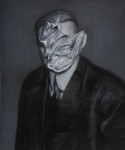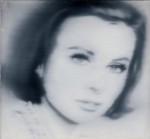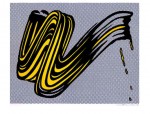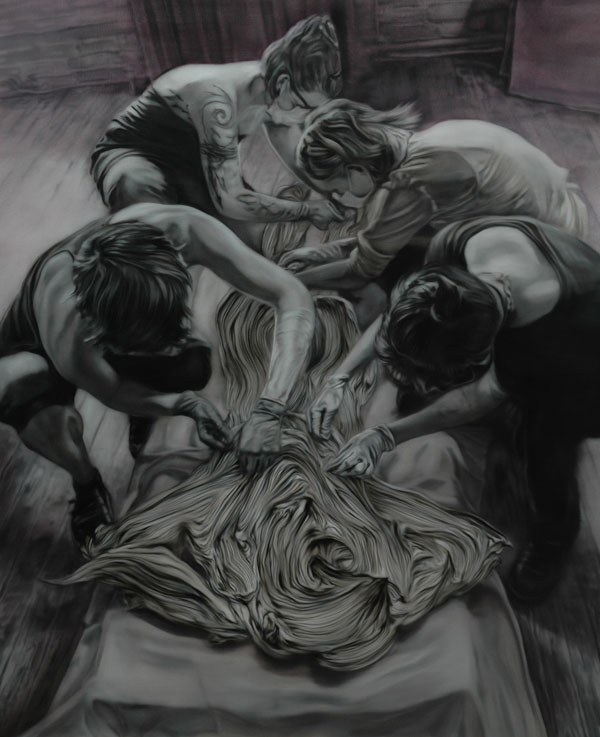
Stephan Balleux
Sometimes people talk about an artist being a “a painter’s painter”. This is a painter who really revels in painting itself, and whose work is more about actually painting than about making paintings “of” things. Stephan Balleux is like that.
Balleux is a Belgian living and working in Berlin – but still sells most of his work in Belgium. Why not, right? Berlin is a lovely city.
Stephan Balleux is a painter’s painter, but in a much more conceptual sense. His work nods to historical traditions of painting and is quite conceptual in its play with surface – as – subject that has been such an important part of art theory in regards to painting over the years. What does it mean when the brushstroke is not only visible but is replicated with photorealistic techniques? It’s all very meta.
- Stephan Balleux - Gerd (2009)
- Stephan Balleux - Vanity #4 (2007)
- Stephan Balleux - the Catch (2008)
- Stephan Balleux - the Lesson (2008)
- Stephan Balleux - the Portrait (2007)
- Stephan Balleux - Sisters (2008)
There’s a bit of Mark Tansey’s obsession with art history & art theory, a bit of the playfulness of pop artists like Lichtenstein or surrealists like Magritte, and a bit of the photographic techniques of Gerhard Richter.
- Rene Magritte - La trahison des images (1928-29)
- Gerhard Richter - Portrat of Liz Kertelge (1966)
- Roy Lichtenstein - Brushstroke (1965)
Balleux gets compared to Richter a lot. I can see it insofar as he uses some of the same techniques like selective focus and blurring, but it seems cheap to identify commonalities artists have with other artists and say “oh it’s just like what ____ was doing”.
My immediate impression of Stephan Balleux’s paintings at Wardlow Studios was that they were a cross between Gerhard Richter and Glenn Brown. On closer inspection, I found that they were both intriguing and superbly done. His paintings combine the blurry Richteresque photographic style with highly detailed renderings of globs of textured paint. In some paintings, historical photographs are reworked with luxuriant splotches of parasitic paint which contour and obscure the subject’s faces. Landscapes and animals are transubstantiated into swirling animistic paint. In other paintings faces emerge from vivid colour fields of sticky oil paint. I feel as though I am using the word paint far too much here but I’m not sure how to get around this, these are paintings of paint. Even the pastel drawings were about paint.
– Tony Lloyd / Art Info
Nobody makes art in a vacuum – your style, content, and approach are all influenced by everything around you. It’s not quite as simple as Descarte’s dualist notion of a purely objective and purely subjective interpretation of the world around us – usually referred to as Cartesian dialectics. ‘Sayin. Edmund Husserl (the guy who came up with phenomenology) called this mutual development of culture, communicaton, and our understanding of how communication has meaning “intersubjective”. Not quite subjective or objective but a kind of interdependently developed understanding of the world around us. All this to say that I see Stephan Balleux getting compared to Gerhard Richter all the time and think that’s both an oversimplification and a raw deal.
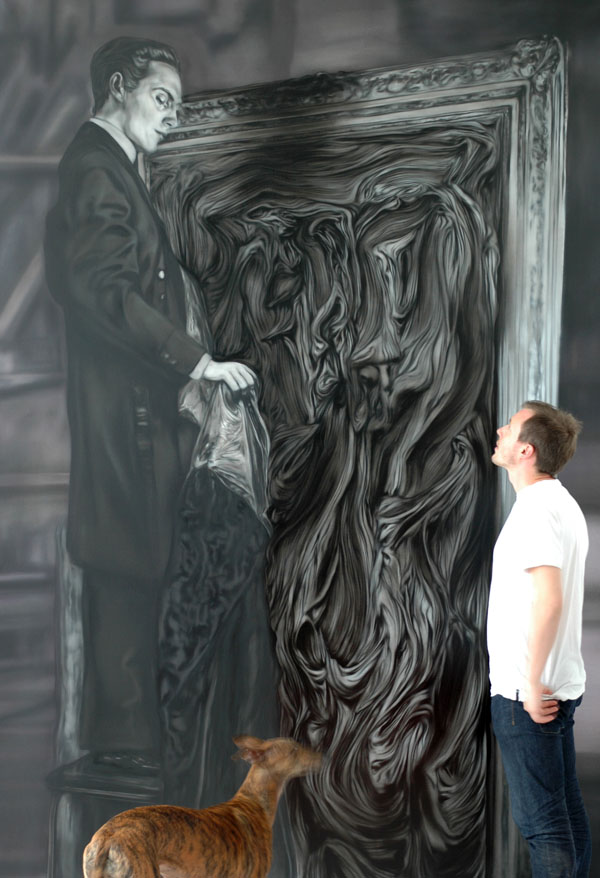
Stephan Balleux in his Studio
More of Stephan Balleux’s work can be seen on his website.

